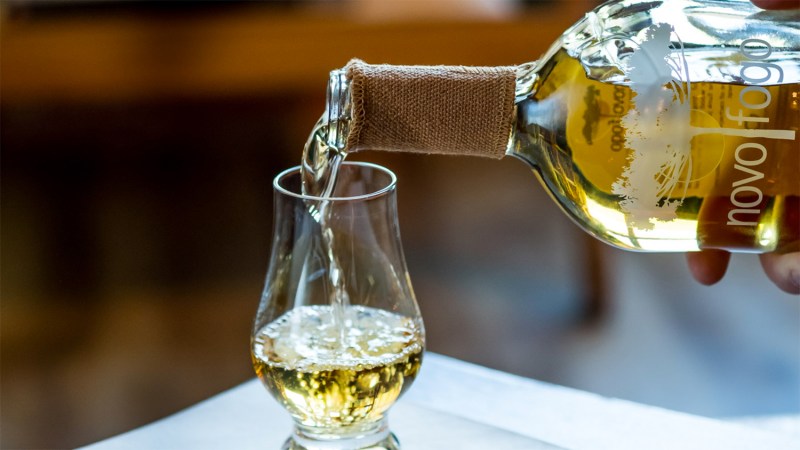
(Curious about cachaça but don’t want to go all in on a bottle yet? Check out the canned and sparkling version of cachaça’s most famous cocktail, the caipirinha.)
One of the companies responsible for this surge is Novo Fogo, a Brazilian brand based in the Atlantic rainforest village of Morretes that creates a variety of organic cachaça expressions. Novo Fogo is back this year with a new product: Colibri (“hummingbird” in Portuguese).

Colibri is the second expression in Novo Fogo’s Two Wood line. It is aged in a combination of American oak and Brazilian teak (also known as Amburana). The first two liquors in that line, Tanager and Graciosa, were made by aging cachaça in a mixture of American oak and zebrawood, and american Oak and Brazil nut wood, respectively.
Amburana is a tree native to northeastern Brazil and has been used for centuries in both traditional medicine and perfume. The very fragrant wood, unfortunately, is endangered due to deforestation, making legal Amburana a scarcity — “legal” being the key here, as there are countless examples of illegal logging.
For the Colibri release, Novo Fogo was only able to secure two barrels’ worth of Amburana wood. During the aging period, the cachaça was moved back and forth between the used American oak barrels and the Amburana barrels. This created a cachaça with a nose redolent of vanilla, toffee, and cinnamon, and a palate that brings tropical fruits like banana and passionfruit into play. The finish brings you back to the spice characteristics with brown sugar and cinnamon.
If this sounds right up your alley, then you’re going to have to move fast — only 400 cases of Colibri are available (remember, they only had two Amburana barrels to begin with). Colibri comes in at 42 percent ABV and retails for around $35.
Images courtesy of Novo Fogo.




